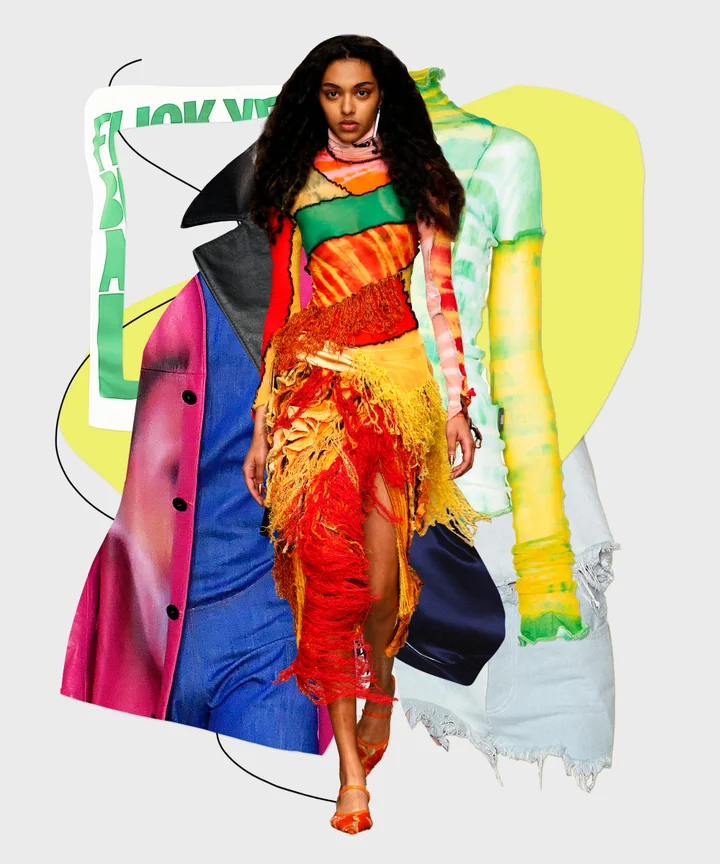Exploring the Rich Heritage of Eastern Wear Pakistan in Modern Fashion
Exploring the Rich Heritage of Eastern Wear Pakistan in Modern Fashion
Blog Article
Introducing the Rich Heritage of Eastern Style
Exploring the complex tapestry of Eastern fashion introduces a world where practice satisfies technology, and workmanship intertwines with social symbolism. From the extravagant silks of ancient dynasties to the intricate needlework of nomadic people, each garment tells a tale that transcends time and borders, resembling the rich heritage and artistic tradition of the East. As we peel off back the layers of history and practice, an interesting trip awaits, untangling the secrets behind the fascinating allure and enduring impact of Eastern style on the worldwide phase.
Beginning of Eastern Fashion

In Mesopotamia, for instance, the Sumerians and Babylonians produced garments making use of linen, natural leather, and wool, embellished with intricate patterns and fashion jewelry. Ancient Egyptians are renowned for their sophisticated weaving abilities and the use of lightweight, breathable textiles like linen. Chinese fashion stressed the significance of shade importance and elaborate needlework techniques, while Indian clothes included vibrant shades, luxurious materials like silk and cotton, and intricate drapery styles such as the saree.
These old human beings not only influenced each various other yet also paved the means for the culturally abundant and diverse tapestry that is modern Eastern style. Via centuries of evolution, Eastern fashion proceeds to grow, mixing tradition with contemporary impacts to develop ageless and special designs.
Social Impacts and Practices
Attracting from centuries-old personalizeds and ideas, social influences and customs play an essential function fit the significance of Eastern fashion (eastern wear pakistan). The rich tapestry of cultures throughout Eastern areas such as Asia, the Middle East, and Africa has greatly affected the garments styles, colors, fabrics, and develops that are prevalent in Eastern style today
In nations like India, Japan, and China, standard garments like sarees, robes, and cheongsams proceed to hold considerable social significance and are usually decorated with intricate embroidery or symbolic patterns that mirror ingrained beliefs and worths. In Middle Eastern nations, the streaming abayas and kaftans put on by men and females not just serve as small clothes however also mirror the region's social heritage and Islamic customs.
Moreover, making use of specific shades like red forever luck in Chinese society or elaborate geometric patterns inspired by Islamic design further exhibit how cultural impacts materialize in Eastern fashion - eastern wear pakistan. By recognizing and protecting these social influences and customs, Eastern style continues to advance while staying real to its abundant heritage
Development of Eastern Attire
Gradually, Eastern garments have gone through substantial changes, mirroring a blend of tradition and modernity in their style and design. Conventional Eastern garments such as the saree, salwar, bathrobe, and hanbok kameez have progressed to incorporate contemporary aspects while preserving their cultural significance.
One remarkable evolution is making use of innovative materials and strategies in Eastern garment building and construction. Traditional handwoven textiles like silk and cotton have been enhanced with modern-day products such as polyester and blends, offering enhanced toughness and convenience of treatment. Additionally, improvements in printing innovations have actually made it possible for detailed patterns and designs to be incorporated into Eastern garments with precision and detail.
Additionally, adjustments in shape and customizing have actually improved Eastern attire, making them extra versatile and appropriate for varied celebrations. Typical outfit codes have relaxed, allowing for trial and error with decorations, designs, and company website shades. This development has not just made Eastern garments extra attractive and available to a worldwide audience but has also guaranteed their proceeded importance in modern fashion landscapes.
Significance in Eastern Outfit
Exploring the ingrained cultural importance woven right into Eastern outfit reveals an abundant tapestry of significance and practice. Eastern garments are often imbued with signs that reflect the wearer's social standing, religious ideas, and social identity.
Furthermore, specific garments hold symbolic meanings. Its design, fabric, and even the way it is worn all bring deep cultural relevance.

Effect of Eastern Fashion Today

The unification of Eastern aspects in Western fashion has actually caused a blend of designs that cater to diverse tastes and preferences (eastern wear pakistan). Designers usually draw motivation from Eastern patterns, textiles, and shapes, developing cutting-edge and one-of-a-kind pieces that mix traditional and modern aesthetic appeals. This cross-cultural exchange has not just rejuvenated the garment industry however also fostered a deeper admiration for Eastern heritage and workmanship
Moreover, the rise of digital systems and social media has actually additionally magnified the effect of Eastern fashion, allowing designers and brand names to reach a bigger target market and showcase their cultural heritage to the globe. With partnerships, fashion programs, and online campaigns, Eastern style remains to evolve and grow in today's interconnected and dynamic global landscape.
Verdict
Finally, the rich heritage of Eastern style is a testimony to the cultural impacts, elaborate craftsmanship, and extensive meaning embedded in each garment. my link From old worlds to modern analyses, Eastern fashion proceeds to mesmerize with its unique mix of tradition and technology. The effect of Eastern style today acts as a reminder of the ageless elegance and artistic expression that have made it an international sensation commemorated for its rich cultural heritage.
Discovering the elaborate tapestry of Eastern style reveals a globe where tradition satisfies innovation, and workmanship intertwines with cultural importance.The withstanding importance and cultural relevance embedded in Eastern clothes continue to shape and affect the contemporary effect of Eastern style today. Eastern fashion has gone beyond boundaries, ending up being an international phenomenon accepted by developers, stars, and style enthusiasts worldwide.In final thought, the abundant heritage of Eastern fashion is a testimony to the cultural influences, elaborate workmanship, and extensive symbolism embedded in each garment. The effect of Eastern fashion today offers as a pointer of the classic sophistication and artistic expression that have made it a worldwide sensation commemorated for its abundant cultural heritage.
Report this page